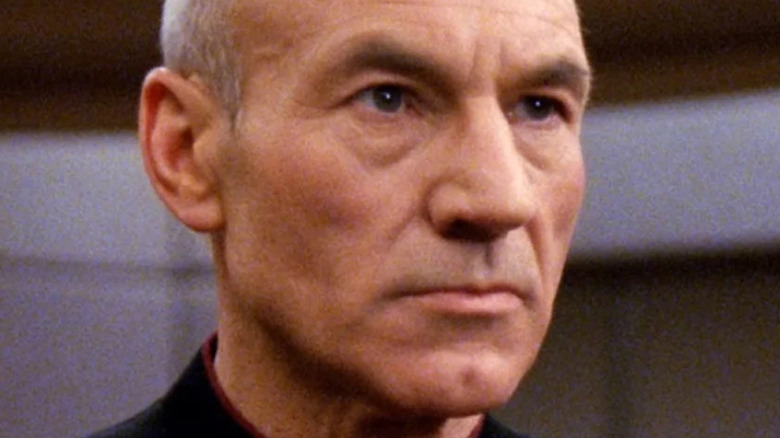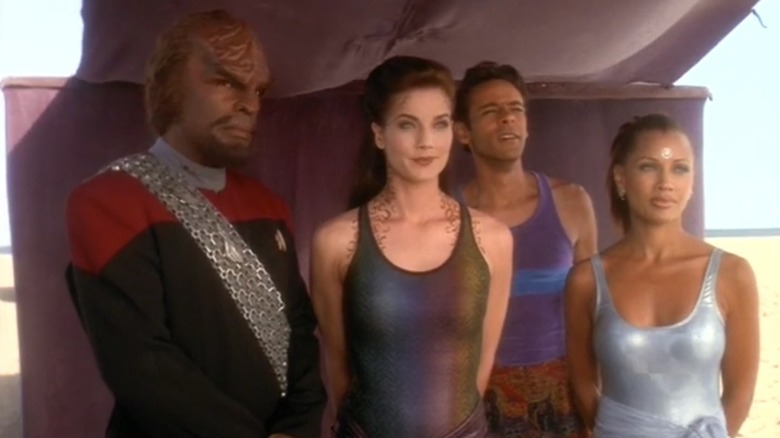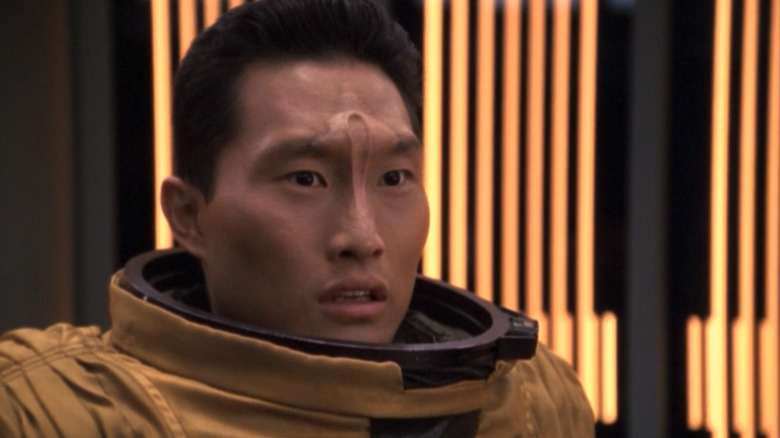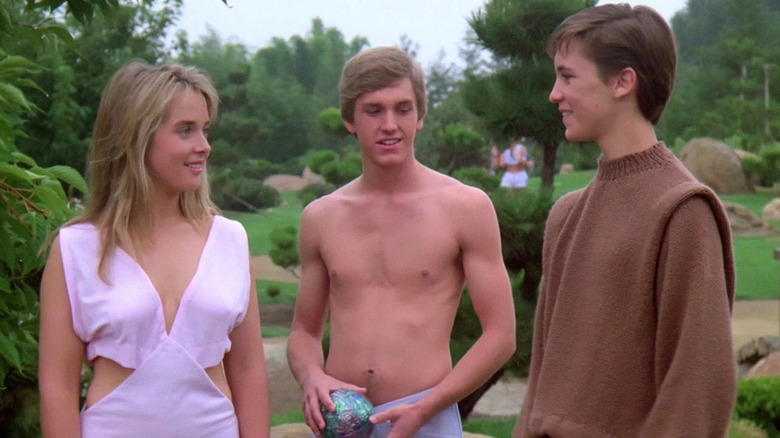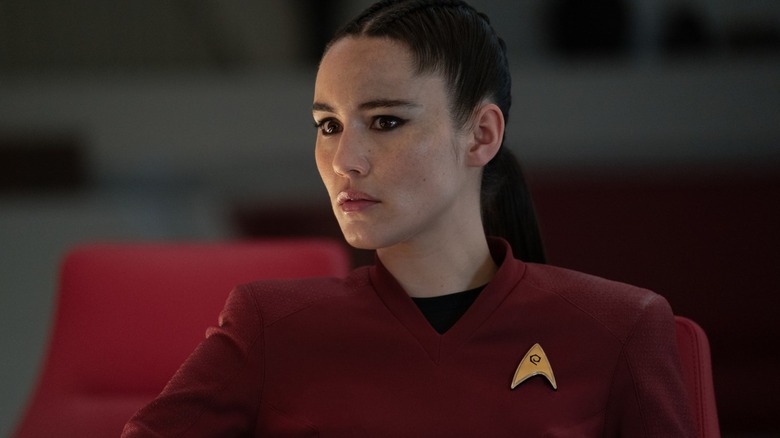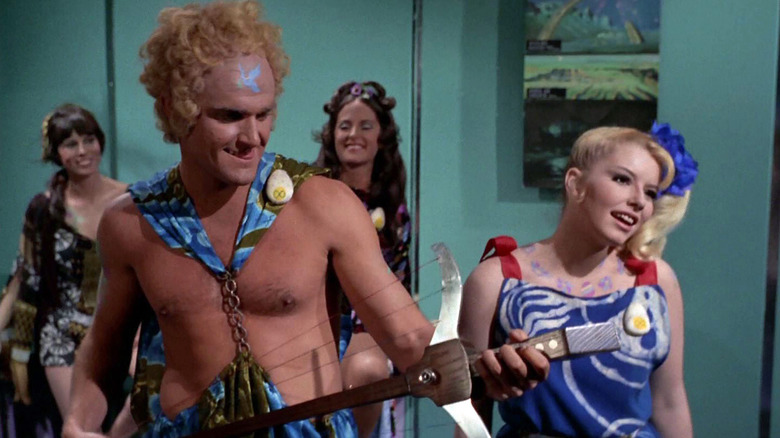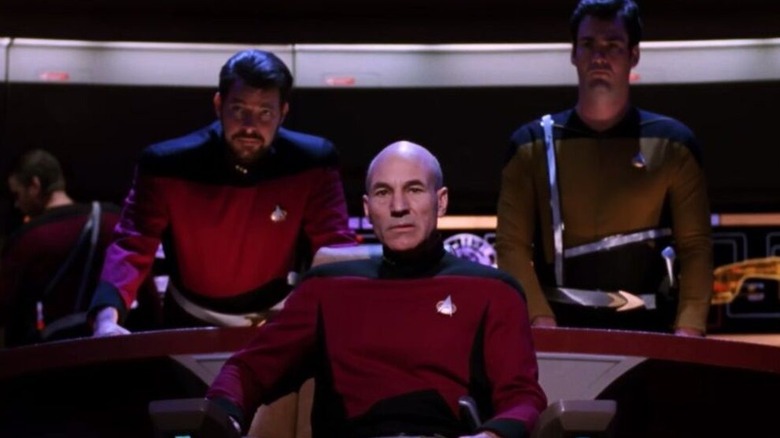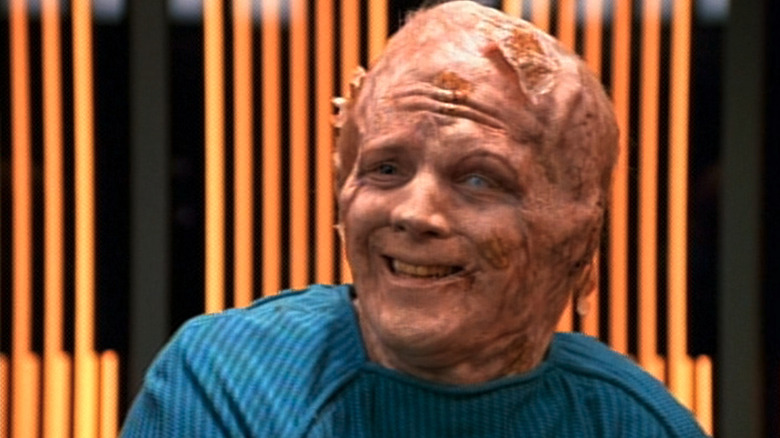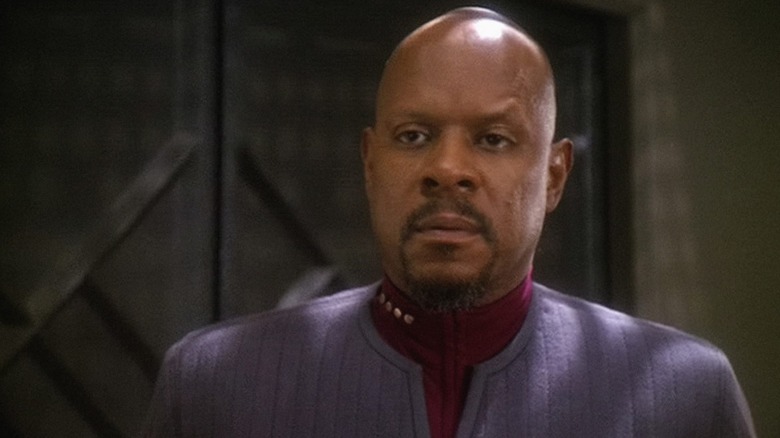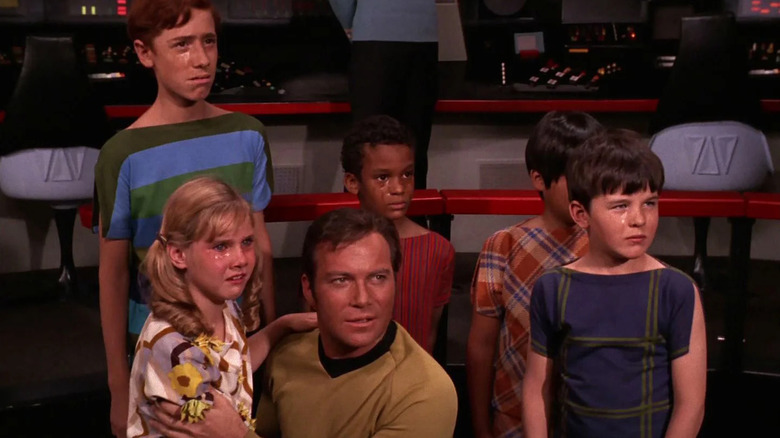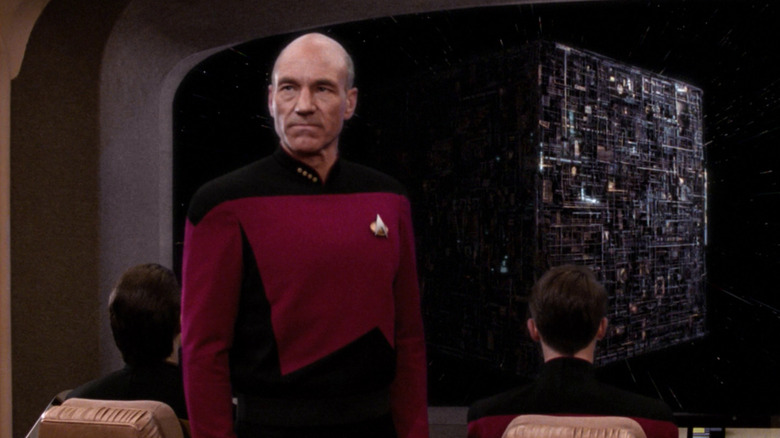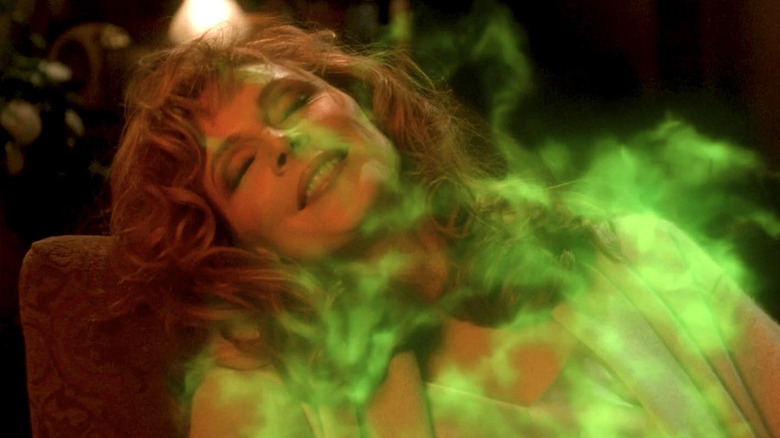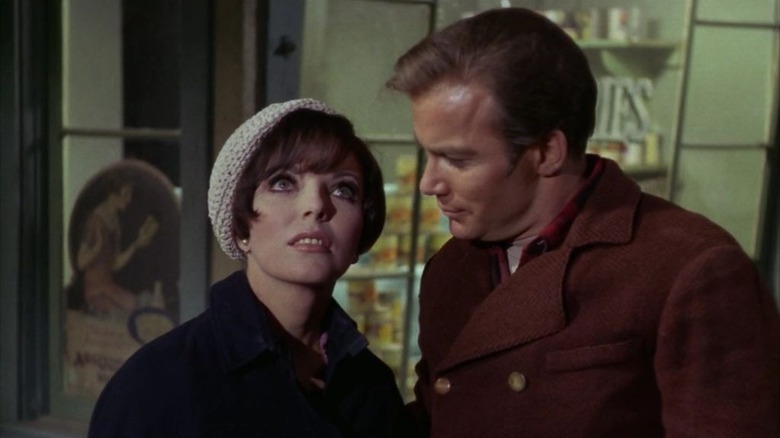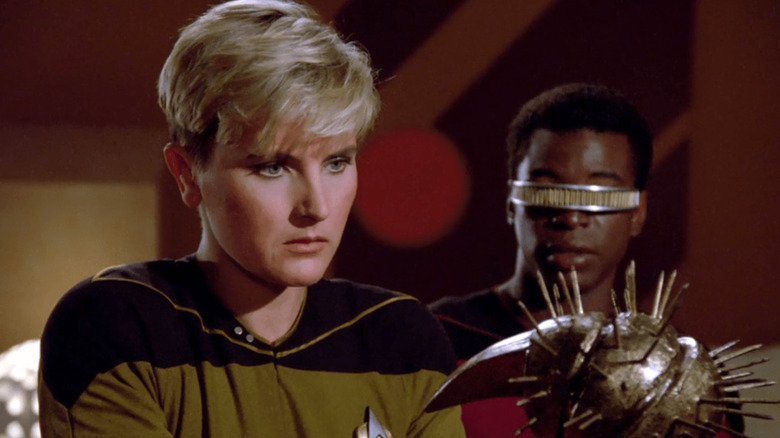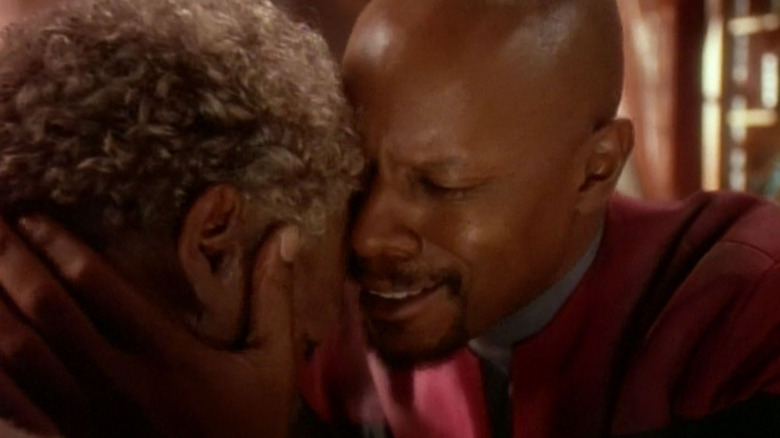Star Trek's 7 Best And 7 Worst Episodes Ranked
Among television's longest running franchises, "Star Trek" launched in 1966 and has since produced 12 television series compiling a total of more than 800 episodes. From its first season on the air, "Star Trek" started producing some of science fiction's best stories, from all-time classics that have transcended the genre to fan favorites that have become pop culture staples. But that's not to say that everything "Trek" has ever produced has been of the highest quality. Every generation has their favorite series, and each new show has its fans and detractors.
But which episodes rank among the franchise's finest across its more than five decades, and which are its biggest clunkers? We've tried to narrow it down, but it's not an easy list to compile. We were forced to leave off some of the all-time best of "Trek," including standout "Deep Space Nine" entry "Duet" and the "Enterprise" episode "Twilight." Narrowing down the worst episodes "Trek" has to offer was no easy feat either, as there simply wasn't room for many colossal stinkers; the "DS9" episode "Move Along Home" and the original series episode "Spock's Brain" both avoided a place on the "worst" list.
But fret not, fanboys. Regardless of your tastes, you're sure to find something to love or hate on this list of the seven best and seven worst episodes of "Star Trek" to date.
Worst: Let He Who is Without Sin (Deep Space Nine)
"Star Trek: Deep Space Nine" may have gone darker than any "Star Trek" series had before, but it also embraced comedy more than most, with several episodes like "Take Me Out to the Holosuite" and "The Magnificent Ferengi" leaning heavy into humor. However, the problem with its worst episode, "Let He Who is Without Sin," is that it's not a comedy when it probably should have been.
In the episode, Worf and Dax take their honeymoon on the "Trek" pleasure planet of Risa. To Worf's displeasure, Rom, Leeta, Quark, and Bashir all tag along. While marital strife strikes when Dax reconnects with a former lover played by singer Vanessa Williams, Worf is unexpectedly recruited by a group of ultra-conservative dissidents who see him as a kindred spirit. So while Bashir, Quark, and Leeta are off sunbathing, Worf and his new friends sabotage the planet's weather control systems and ruin everyone's day with soggy food. Yes, that's a plot point from a real episode of "Star Trek."
The biggest problem with "Let He Who is Without Sin" is it tries to mix high drama with light laughs and winds up failing at both, while watering down one of the best "Trek" characters in the process. The relationship elements are played up for unsuccessful attempts at comedy, while the dissident group's scheme never really makes a lot of sense. The cast's ugly bathing suits don't help matters.
Best: Blink of An Eye (Voyager)
In the "Star Trek: Voyager" Season 7 entry "Blink of an Eye," Voyager comes across an unusual planet where time moves faster than the surrounding space, meaning that for every second that goes by on the ship, several days pass on the planet's surface. But when Voyager becomes caught in a strange energy field in orbit, they are forced to watch as the primitive planet below races through thousands of years of societal evolution.
At first, the crew considers this a mere curiosity, viewing their study of the planet as a glimpse into their own past, or as Chakotay puts it, "the greatest anthropological find" of their careers. But soon they discover that their presence has been having an unintended consequence, causing periodic seismic disturbances on the planet while the slowly maturing society begins to view the starship in their sky as some form of deity. Eventually, when the people below progress to 21st century levels of technology, explorers from the planet visit Voyager and ultimately help free them from the energy field.
Undoubtedly a compelling sci-fi tale, what makes "Blink of an Eye" unique is how it tells the story as much from the perspective of the people on the planet as those of Voyager's crew. We meet them as cave dwellers before they mature into enlightened philosophers and eventually interstellar explorers, demonstrating how curiosity about the world around us drives us to make new discoveries. A thought-provoking and sometimes moving drama, "Blink of an Eye" is easily the best of "Voyager."
Worst: Justice (The Next Generation)
The first season of "Star Trek: The Next Generation" is riddled with some of the worst episodes of the series, but one of its biggest offenders is the episode "Justice." A few "Star Trek" writers have commented on series creator Gene Roddenberry's arguable preoccupation with sex and sensuality in the series (via TrekCore), and here we got a real taste of what he could do with more relaxed TV standards of the 1980s. Visiting the planet Rubicun III, we are treated to half-naked men and women whose entire culture seems centered on carnal pleasure. But it's also a world where even the most trivial crime carries a death sentence.
At the heart of the story, though, is teenaged Wesley Crusher, who mistakenly steps on some hedges and incurs the society's wrath, prompting its leaders to hold him for summary execution. Now caught in the middle of a diplomatic incident, Picard must find a way to make peace and rescue Wesley while still respecting the sovereignty of Rubicun III's laws. A bland script that lacks any suspense despite the high stakes, coupled with one of the corniest concepts for an alien planet — and some of the lamest costumes you'll ever see in the series — make "Justice" laughably bad.
What makes matters worse though is that it's poorly produced episodes like this one that helped shape the impression of Wesley Crusher as an obnoxious bore, drawing the ire of fans for years.
Best: Memento Mori (Strange New Worlds)
The latest "Star Trek" series "Strange New Worlds" debuted in 2022 to virtually universal critical acclaim, bringing the franchise back to its roots with a livelier tone and episodic adventures. And while "Star Trek" has a history of uneven first seasons, the debut year for Captain Pike, Number One, and Mr. Spock was one for the record books, delivering at least one episode that is deserving of a spot on the franchise's best-of list.
The series' sixth episode, titled "Memento Mori," is the show's submarine story in the grand tradition of classics like "Balance of Terror," "Starship Mine," and even the feature film "The Wrath of Khan." The story pits the Enterprise against the dreaded Gorn, a mysterious and deadly race of violent alien conquerors who lure Pike into a trap. Disabled and hiding in a nebula, Pike and crew are outnumbered, outgunned, and must use their wits to stay alive. But if security chief La'An can finally confront her unresolved childhood trauma, she might be able to help them fight back and escape.
A nail-biting thriller full of high-octane action, pulse-pounding suspense, and classic "Star Trek" problem solving, it's everything Trekkies could hope for in the franchise's finest. But beyond all the excitement, it's the exploration of La'An and the raw emotion of her dark past that provides the real heart of the episode.
Worst: The Way to Eden (The Original Series)
Just as the first season of the original "Star Trek" boasted most of the series' best installments, the show's third and final year included most of its worst. That includes "The Way to Eden," lovingly referred to by fans as "the one with the space hippies" and the episode that makes it loud and clear what era the producers were living in at the time and exactly how the writers felt about the emerging bohemian generation.
Not exactly the most exciting episode the franchise has ever seen, the story entrails the Enterprise rescuing an eclectic group of oddly dressed travelers from a passing starship in distress. The free-spirited refugees are led by the cult leader Dr. Sevrin and his followers include a musician, an old friend of Chekov's, and the daughter of a prominent ambassador. They are all part of a growing movement that preaches a new idyllic philosophy that rejects technology, and they are searching for a fabled hidden world called Eden that they hope will be their new home.
Its openly dismissive, perhaps even hostile attitude towards the counter-culture group clearly meant to parallel the hippie culture of the late '60s is the least of the episode's problems. The ludicrous premise, an ineffective story, and a downright silly musical number make "The Way to Eden" unintentionally funny and impossible to take seriously.
Best: Yesterday's Enterprise (The Next Generation)
A grimmer episode of "Star Trek: The Next Generation" than audiences may have been used to at the time, the Season 3 episode "Yesterday's Enterprise" is viewed by many as a turning point in the series. With a fascinating alternate universe concept, enthralling performances, and plenty of surprises, this was the moment when "TNG" came into its own and established itself as a best-in-class sci-fi series.
The shocking story takes a major turn in its opening moments when a starship emerges through a rift in space, instantly changing reality as we know it. Picard's Enterprise-D is no longer a ship of peaceful exploration, but a gloomy, militant battlecruiser. The Federation is embroiled in a decades-long war with the Klingons ... and it's a war that the Federation is losing. The ship that comes through the rift is the Enterprise-C, the previous ship of the line that was thought destroyed defending a Klingon outpost from a Romulan attack more than two decades earlier. Now Picard must decide whether to send the ship back into a battle that will definitely kill its crew in an effort to avert 20 years of war.
A classic among "Star Trek" moral dilemmas in the middle of a high concept premise, "Yesterday's Enterprise" also saw the return of early series cast member Denise Crosby as Tasha Yar, who makes the ultimate sacrifice to save all of history. Surprising, captivating, and unexpectedly dark, this episode forever changed the way fans saw the series.
Worst: Threshold (Voyager)
"Star Trek: Voyager" is rarely seen as the best of the franchise, but at least it offers relative consistency. That is, except for its bad episodes, which are among the most boring and inexplicably bizarre in "Star Trek" history. Several notably awful entries like Season 2's "Elogium" or the boxing-themed episode "The Fight" both narrowly missed this list. But neither of those painfully awkward installments are as infamously terrible as "Threshold."
Our sad tale beings with Paris testing a new experimental transwarp drive that he believes could get the crew back to Earth in seconds. Never mind that Neelix, Torres, Kim, and Paris crack the secret of transwarp — a puzzle that Starfleet has grappled with for more than a hundred years — literally over a late-night cup of coffee; they figure it out, and Paris finds himself going faster than anyone has gone before. Unfortunately, this has the unintended side effect of evolving him into a new stage of human life, which is effectively a giant amorphous slug. After kidnapping Captain Janeway and having a brood of slug babies with her — we swear, we're not making that up — the Doctor reverses the mutation, and all is normal again.
Though the visual effects in the episode are spectacular enough to earn the series an Emmy, the story's inexplicable script and preposterous story — even for an outlandish sci-fi series — turned it into one of the biggest punchlines in the franchise.
Best: In the Pale Moonlight (Deep Space Nine)
"Deep Space Nine" took "Trek" to places it had never been in its later seasons when the Federation goes to war with the Dominion. Years before it became the fashionable norm for television, "DS9" went in a serialized direction and the series produced a number of standouts that focused on topics that "Trek" had rarely covered in the past. The best of the later-season lot, "In the Pale Moonlight," is a tense political thriller that could only have been told on "DS9" and may be the finest example of the depth that the series was capable of.
The episode takes place the middle of the war with the Dominion. The Federation is seeing heavy losses. Determined to turn the tide, Sisko realizes the only way to tip the balance of power is to bring the Romulans into the Federation-Klingon alliance. But to do it, he'll have to test his morals and ally himself with Garak, a Cardassian spy and assassin. Together, they hatch a plot to deceive the Romulans into thinking the Dominion has targeted their empire, but if they're caught it could push the Romulans into an alliance with the Dominion instead.
One of the strengths of "DS9" is its ability to push the boundaries of moral dilemmas, and they did it again in "In the Pale Moonlight," which forces Sisko to wrestle with his conscience as he breaks every rule to save millions of lives. Meanwhile, star Avery Brooks delivers a tour de force performance, while a sharp script full of political intrigue turn this into one of the most engrossing installments in "Trek" history.
Worst: And the Children Shall Lead (The Original Series)
Episodes with children can always be hit or miss, and "Star Trek" has seen a few of both kinds. There's "The Corbomite Maneuver," a beloved episode featuring an early appearance from a 7-year-old Clint Howard, and "Miri," which uses a group of children as villains. But the 1968 episode of the original "Star Trek" titled "And the Children Shall Lead" was not quite as successful, further dragging down the less-than-stellar third season. Ultimately the plot itself proves childish, even downright silly, and there's not much the talented cast can do to save it.
The story concerns the survivors of a wayward ship whose adult crew members are all killed under unusual circumstances. But once aboard the Enterprise, the children invoke the spirit of a being called Gorgan, a mysterious ghostly alien being who urges them to take over the ship and slaughter the crew.
It wasn't easy to narrow down the worst episodes of "The Original Series." Candidates like "Spock's Brain" and the weirdly misogynistic body swap episode "Turnabout Intruder" barely avoided the "worst ever" label. But in the end, we had to agree with series star Leonard Nimoy who cited "And the Children Shall Lead" as the most awful episode the series ever aired.
Best: The Best of Both Worlds (The Next Generation)
For all of the franchise's focus on cerebral sci-fi, outer space exploration, and interstellar diplomacy, some of the best "Trek" episodes are suspenseful action-thrillers and there is no better example than the legendary two-parter "The Best of Both Worlds." Closing out the series' phenomenal third season and opening its fourth, the game-changing story would have ramifications for decades. It reintroduces the Borg, first seen in Season 2's "Q Who," and turns them from a curiosity into the franchise's newest big bad.
In the episode, Riker is grappling with whether to accept a promotion to captain, which would mean leaving the Enterprise. But just as Picard pushes him into taking a command of his own, the Enterprise detects the Borg making a direct run at Sector 001 — Earth. While a Federation battle fleet is decimated, the Borg kidnap Picard and turn him into one of their own. Now it's up to Riker to stop the Borg, save Earth, and — if he can — rescue Picard from the clutches of the inhuman cyborg menace.
A gripping, edge-of-your seat drama from start to finish, "The Best of Both Worlds" is punctuated by one of the best season-ending cliffhangers in television history. It also cemented the series as more than a mere spinoff, signaling that "The Next Generation" was now the "Star Trek" in the cultural zeitgeist.
Worst: Sub Rosa (The Next Generation)
The seventh season of "Star Trek: The Next Generation" saw a noticeable dip in quality. Lackluster installments like "Masks" and "Emergence" could have made this list if not for what is generally considered the most laughable story in the series, "Sub Rosa." Criminally wasting a rare Dr. Crusher-focused episode, there is no dramatic thriller here — merely a cheesy ghost story straight out of a 19th century harlequin romance novel.
The episode begins with the Enterprise paying a visit to a Federation colony that has patterned itself after medieval Scotland, presumably so the story could have a fairytale look to match its premise. There, Dr. Crusher attends the funeral of her grandmother and inherits a strange heirloom candle. In her grandmother's diary, she discovers stories of her affair with a mysterious young lover named Ronan. Before long, this charming and lustful man appears and seduces Dr. Crusher as well. But we soon learn that Ronan is actually an alien being who lives in the candle and is really feeding off of the doctor's life force.
But the problems here go beyond the uncomfortable romance, as there's simply not enough story to fill out the episode. This leads to a goofy subplot in which Geordi and Data try to fix the colony's weather control system so they can all enjoy the town's annual Caber Toss. But "Sub Rosa" did have one tangible upside, as it introduced producers to actor Duncan Regehr, who would go on to the portray recurring character of Shakaar on "Deep Space Nine."
Best: The City on the Edge of Forever
There are plenty of all-time great episodes of the original "Star Trek" series that could have made this list, but there is one clear winner if you're looking for its very best: Season 1's "The City on the Edge of Forever." Combining a quintessential instance of time-travel on "Star Trek" with a tragic love story, the episode turned what had been to that point mostly a fun space adventure series into an emotional romantic drama with stellar results.
Based on a story by acclaimed science fiction luminary Harlan Ellison, the episode sees McCoy thrust back in time where he unwittingly alters Earth's past so that Starfleet and the Federation no longer exist. When they head back to find McCoy and restore the timeline, Kirk and Spock stay at a halfway house in 1930s New York where the Enterprise captain falls in love with missionary worker Edith Keeler (Joan Collins). Tragedy strikes again when Spock discovers that Edith is at the center of the divergence that changed history, and that she must die to save the future.
The show's strong script is elevated further by some of the show's best performances from stars William Shatner, Leonard Nimoy, and guest star Collins. A timeless star-crossed love story, "The City on the Edge of Forever" stands tall as one of the best episodes in "Trek" history more than half a century after it first aired.
Worst: Code of Honor
Even the worst episodes of "Star Trek" can have at least some redeeming value, whether it's a kernel of a good idea or a single strong performance. But the notoriously awful "Code of Honor" has nothing at all to grasp onto and is downright offensive in more ways than one. But the fact that it's one of the rare first season episodes to give Tasha Yar something of substance to do makes it all the more regrettable, as actress Denise Crosby would quit the series not long after.
The problems for the episode appear right away, when the Enterprise visits a far-off world that is the only place to find a much-needed vaccine. The locals are portrayed as primitive and backwards and are all played by black actors with heavy foreign accents, making "Code of Honor" an incredibly uncomfortable watch right from the get-go. But to make matters worse, the world's leader becomes enamored with security chief Tasha Yar (Crosby) and forces his wife — who is viewed as his property — to fight her to the death for both her freedom and for the life-giving medicine.
Devoid of any moral message that might justify such blatant racial stereotyping, even the cast is embarrassed by this one. But what makes it all the worse is that it's horribly directed and poorly acted with goofy dialogue and cheap-looking sets and props. With "Code of Honor," "Star Trek" crossed the line from bad to truly unwatchable.
Best: The Visitor (Deep Space Nine)
Though the series was known for its ongoing war sagas, the "Deep Space Nine" episode "The Visitor" eschewed action and war to tell an intimate and emotional character-focused story. Told in flashbacks, "The Visitor" introduces us to an elderly Jake Sisko (Tony Todd) who is nearing death and recounting his life story to a young woman visiting his home.
Years earlier we witness a crisis aboard the Defiant that leaves Captain Sisko dead, with the teenaged Jake (Cirroc Lofton) forced to watch as his father disappears before his eyes, apparently killed by a random power surge. But we soon learn that Sisko is trapped in a layer of subspace, and he emerges in his son's presence at random points in time throughout the young man's life. As the elderly Jake continues his story, the episode spans decades, and we see that as Jake gets older, he puts aside his own family and career and becomes obsessed with bringing his father back.
A touching episode with more than one moving moment that will bring tears to even the toughest eyes, "The Visitor" is a story of family that will resonate with anyone who fears the loss of a loved one, and the lengths we might be willing to go to in order to prevent it. Powerful performances by Tony Todd, Cirroc Lofton, and Avery Brooks help to make it not just the best episode of "Deep Space Nine," but arguably the best in the entire franchise.
